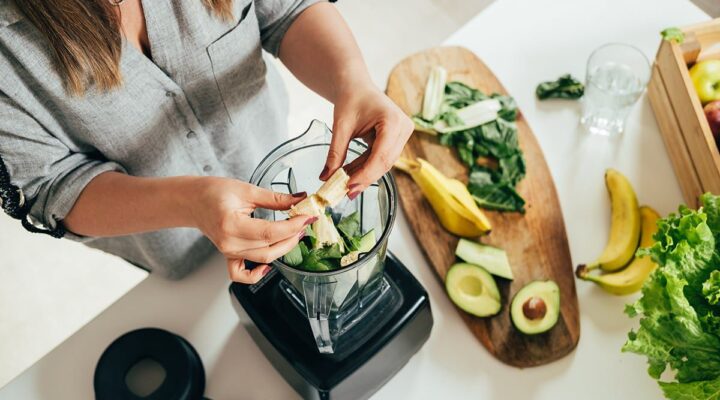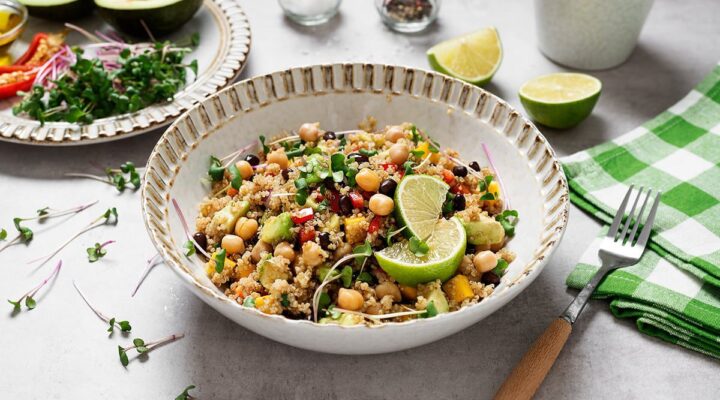Period Burnout? Here’s How to Combat the Anxiety Around Your Time of the Month
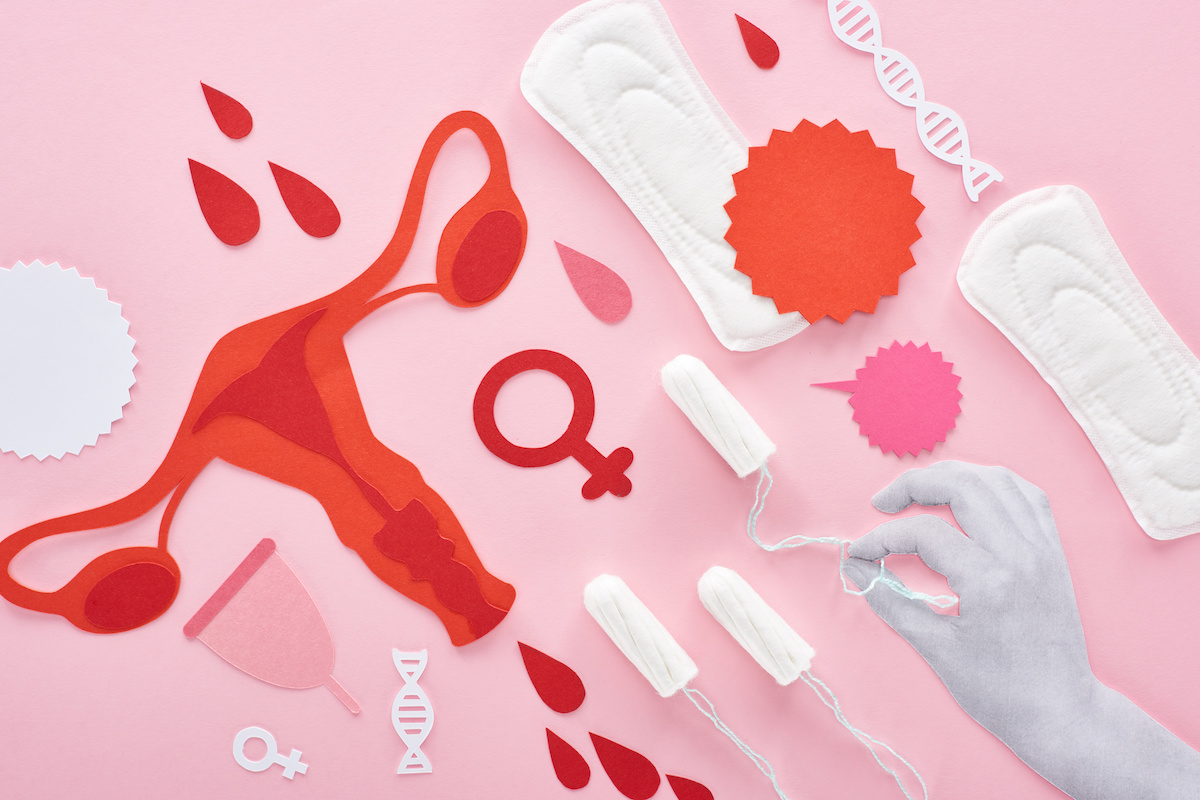
You’re unlikely to find many females who look forward to their period. I for one will black out the dreaded four days in my calendar every month, knowing that I’ll be swapping in the darker, elasticated jeans (cheers, bloating), stocking up on tampons, and avoiding sexy date nights when I’m feeling anything but.
And the week before isn’t much better thanks to a fluctuation of sex hormones with the potential to cause Premenstrual Syndrome (PMS) symptoms, which for some women can be crippling.
Period anxiety is one such symptom, and it can come on at any given time, often in the run up to a period. Ever felt like someone is gossiping about you? And then you start to overthink and before you know it you’ve made up a whole scenario in your head and that’s it, everyone hates you and you’re a failure? Or, ever felt like you’re an imposter at work, as though you don’t belong there and you’re not making enough of a mark?
Well, this is often what anxiety can feel like.
Although the symptoms that come with a female’s menstrual cycle can vary from woman to woman, an estimated 30 percent of females experience moderate to severe PMS. Over 150 symptoms have been noted as symptoms of PMS — cramps, headaches, back pain, acne, food cravings — with anxiety being a key player. Here we look at how to ease those anxious feelings and overcome period burnout once and for all.
What’s Behind Period Anxiety And How Can It Be Eased?
“Almost every single function in the body is controlled by our most sensitive signals; hormones,” explains Alexia Acebo, an integrative health coach and lead trainer at P.volve. “When our hormones aren’t following the typical pattern that they’re supposed to each month, women can often be left with anxiety, sometimes extreme anxiety.”
Plus, the worry of impending period symptoms can exacerbate this hormonal imbalance and heighten symptoms. “Every action we take has a snowball effect on the next, so as our period approaches living in alignment with the phases of our cycle can help avoid this anxiety as well as other symptoms associated with that premenstrual time of the month.”
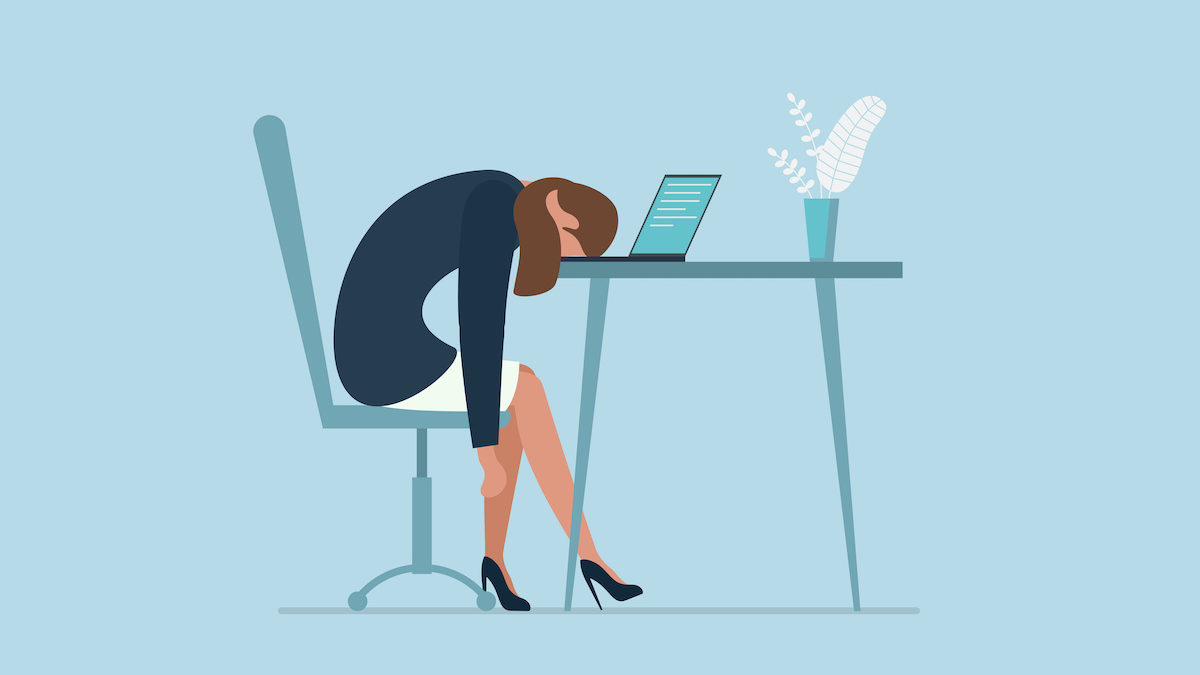
The Menstrual Cycle, Explained
Acebo explains that the menstrual cycle is typically split into four phases. Knowing where you are in your cycle can help you to implement specific lifestyle adaptations in a bid to keep hormones in check.
Menstrual phase – days 1-4
“Here the hormones progesterone and oestrogen are at their lowest levels, taking your energy down with them.”
Follicular phase- days 5-13
Acebo explains that during the follicular phase, all hormone levels start out low with oestrogen rising to a peak right before ovulation. This increase in oestrogen may cause you to feel a huge rise in energy.
Ovulatory phase – days 14-16
“Oestrogen rises to its highest level in step with testosterone, while follicle-stimulating hormone and luteinising hormone also surge to trigger the release of an egg from the ovary.” Ovulation pain, breast tenderness and skin breakouts can sometimes accompany these fluctuations. Energy levels also peak during this phase.
Luteal phase- days 17-28
“After ovulation, oestrogen drops off and progesterone begins to rise to its highest point right before your bleed. Energy declines throughout.” However, there is a catch. “If progesterone isn’t rising and in balance with a slight rise in oestrogen, those dreaded PMS symptoms can make an appearance.”
“So really, there are only two weeks per month where I’m actually ‘normal’”, remarked my frustrated friend as I read out the phases of her cycle. Well, she’s got a point.
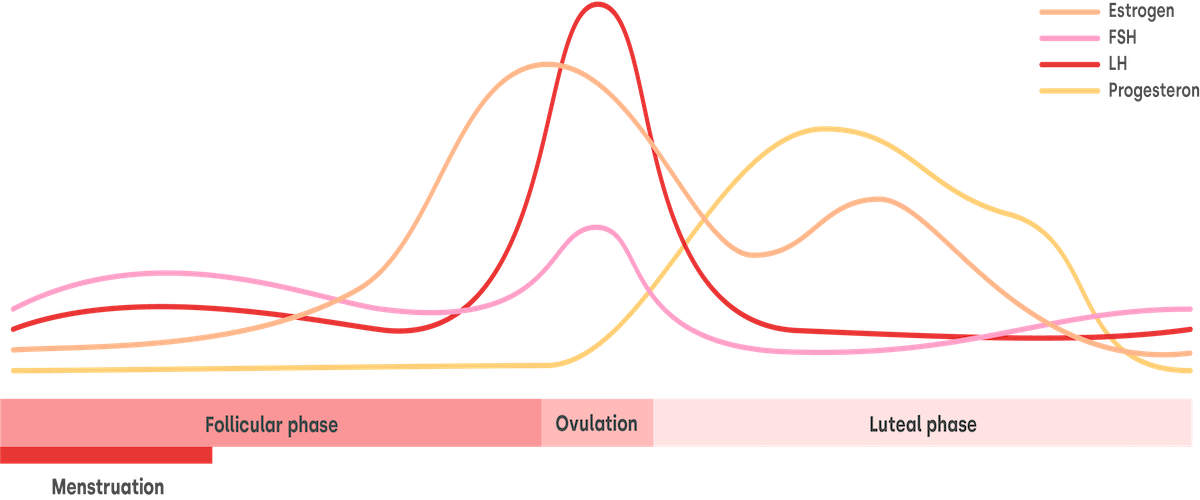
Period Anxiety And Nutrition
Balancing out hormones is important as it can help deal with PMS symptoms, including period anxiety. Our diet can play a big part in this, with each phase in the cycle reacting better to different foods.
During the menstrual phase, mineral-rich foods will combat any soreness that you might feel during your bleed.
“Each meal should include a protein to ensure you get sufficient amino acids necessary for hormone production,” says Acebo. “Also focus on energising carbs, healthy fats and low glycemic fruits and veggies such as berries, broccoli, cabbages and peppers.”
Plus, when the chocolate cravings set in, opt for a dark chocolate containing 85 percent cacao or higher.
During the follicular phase, the body needs foods that mimic the energising nature of your hormones. “Go for fresh, whole and unprocessed ingredients. Your body is able to readily use glucose from energising carbohydrates during this phase,’ adds Acebo, so enjoy more grains, potatoes, fruit and other higher-carbohydrate foods this week.
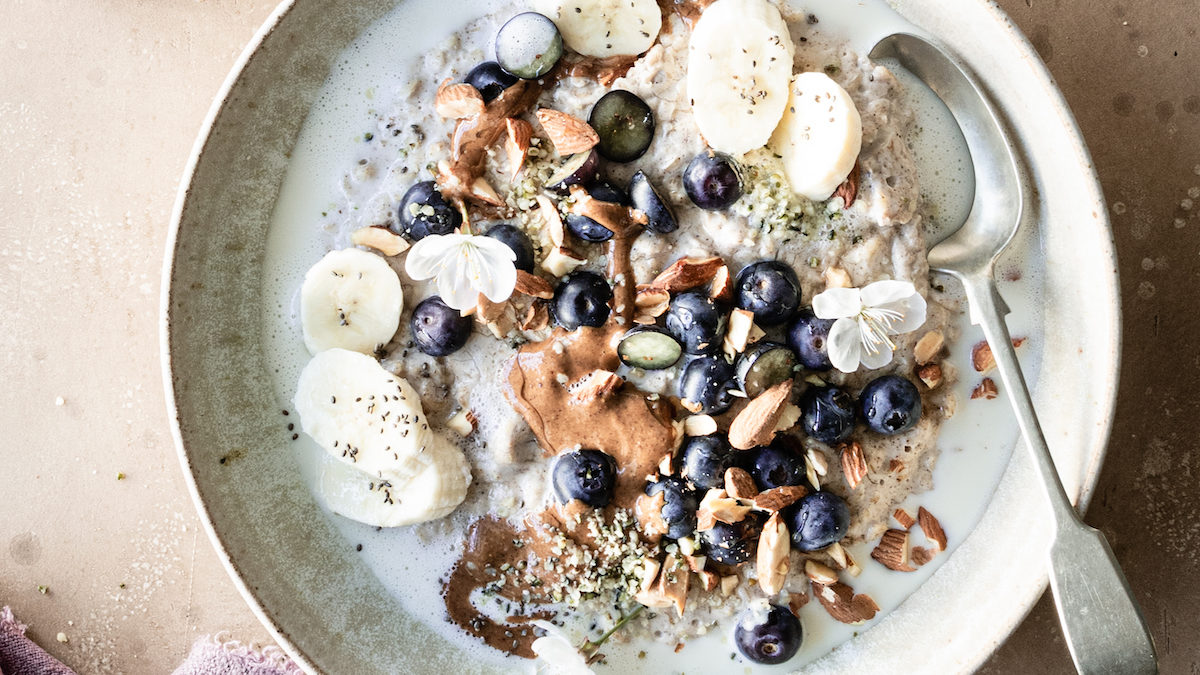
The ovulatory phase is a time to detoxify the body of any excess hormones. “As oestrogen drops post-ovulation and progesterone begins to rise, so will insulin resistance which means your body is less able to metabolise carbohydrates.” Replace some of the simple carbohydrates from the follicular phase with healthy fats such as nuts, seeds, avocados and oily fish.
The luteal phase is often the phase that triggers those ravenous cravings. “Listen to what your body is asking for, like magnesium-rich foods,’ explains Acebo. Try dark, leafy greens, wholegrains, wheat and oat bran, plus, focus on sweet root vegetables and healthy fats to curb the desire for junk food.
She adds that processed foods, added sugars, caffeine and dairy have been linked to heavier, more symptomatic, or irregular periods due to inflammation and their effect on blood sugar.
Managing Stress And Sleep
Stress, in particular chronic, ongoing stress, can lead to increased inflammation in the body. When the stress hormone cortisol is heightened, female and male bodies go into fight or flight mode. However, in females, staying in this mode for too long can lead to hormone irregularities and even the loss of periods altogether, as the body prioritises other functions and essentially presses ‘pause’ on reproductive activities.
Managing stress is pivotal. Journaling, meditation, yoga and pilates are all great ways to keep cortisol down. Saying ‘no’ to social plans, workouts or extra jobs at work when you’re particularly busy or tired is also important, as is scheduling in down time.
When it comes to sleep, women can often feel noticeably more fatigued around their luteal and menstrual phases. Scheduling plenty of rest time can help with period anxiety, as can maintaining a consistent sleep and wake time. Alexia says that timing your workouts around your cycle can also help maintain a healthy hormone balance.

“During the menstrual phase, honour your body by giving it rest. As energy levels rise, match that energy with yoga, resistance workouts, and light cardio workouts as you see fit.”
During the follicular phase, opt for energising high intensity workouts, as well as strength training and cardio. High intensity training can continue into the ovulatory phase, however, as energy declines in the luteal phase, cardio and strength training are best. Often, energy plummets by the end of the luteal phase, so yoga and stretching can really help here.
In a bid to lessen period anxiety and help the body to work peacefully, it’s important to work with hormones and remove the constant demands we place on ourselves and our bodies. As women, we’re often trying to juggle a million and one things, but prioritising our diet, stress management and sleep can really make our cycles so much more bearable.
To find out more about tailoring your training, nutrition and lifestyle to your menstrual cycle you can find our email course on the topic here.




